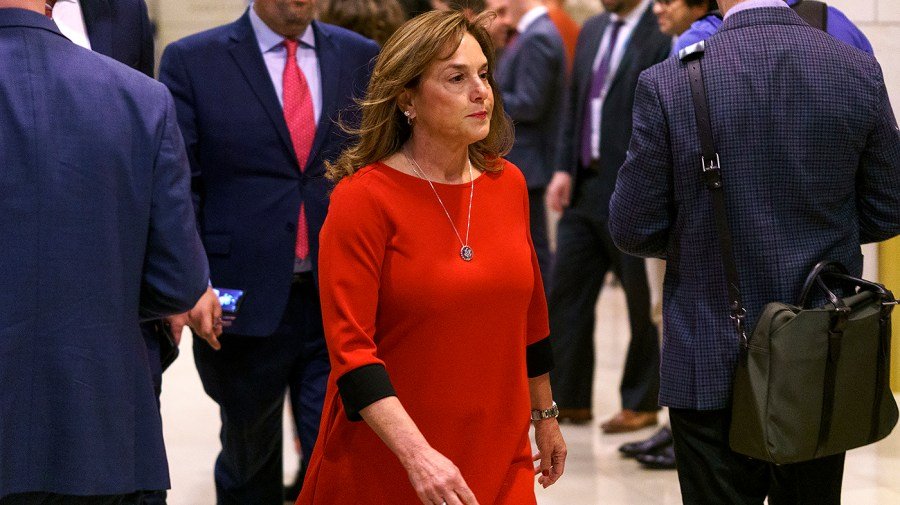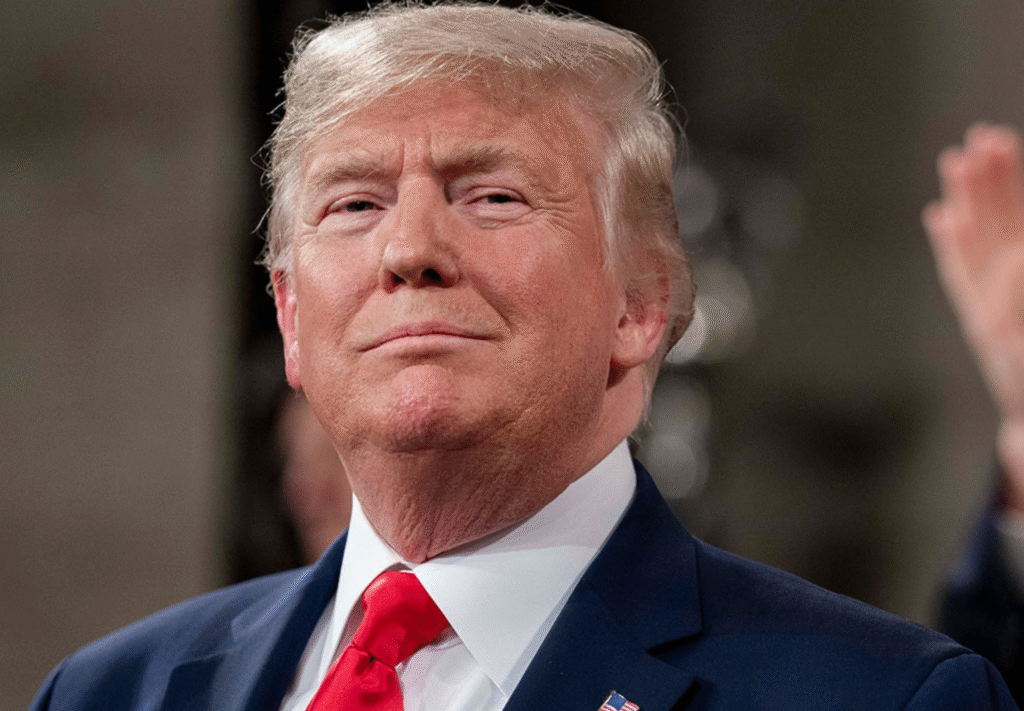World News
House GOP grows skeptical on Ukraine: ‘It’s not just the Freedom Caucus’ on September 15, 2023 at 9:30 am

Skepticism is growing among House Republicans on the approval of more Ukraine funding as Congress faces its first test on America’s role in the war against Russia.
The House could face a vote as soon as this month as the Senate looks to fold a Ukraine aid package into a continuing resolution that would push back the deadline for a potential government shutdown.
While a minority wing of far-right lawmakers have long opposed more Ukraine funding, several GOP lawmakers told The Hill this week that more moderate House Republicans are also raising concerns.
“It’s not just the Freedom Caucus; I think there’s a lot of people that are concerned with funding,” said Rep. Lisa McClain (R-Mich.), a member of the House Armed Services Committee. “I think it all depends on what’s in the bill.”
McClain said she wanted Congress to focus the spending bills on keeping the federal government running and on domestic crises like the recent wildfires in Hawaii.
“We have the appropriations bills right that we need to get out,” she said. “That is super critical. But also what I’m more concerned about is disaster relief for the United States. That’s what our focus is on right now.”
Rep. Andy Biggs (R-Ariz.), a former chair of the House Freedom Caucus, said he would not support a new Ukraine package and doubted any Ukraine funding would be moving to the floor anytime soon.
But he was hesitant to say the opposition would ultimately have enough votes to stop approval of Ukraine aid.
“We’ve got a lot of war hawks in Congress,” he said, “so I’m not sure.”
Though the Republican opposition to U.S. military support for Ukraine has steadily grown over the past year and a half of the war — both in Congress and among voters — a majority of the GOP caucus and almost all Democrats have overwhelmingly passed previous spending packages for Kyiv.
But the next vote on Ukraine aid will be the first on a major package since Speaker Kevin McCarthy (R-Calif.) took the gavel promising no more “blank checks” to Ukraine.
The uneasiness in the House comes as the Senate plans to include Ukraine funding in a continuing resolution (CR) to keep the government funded as annual appropriations bills are worked out.
If the House refuses to pass a CR with the Ukraine funding attached, it could be punted to later this year and attached to other spending bills or considered on its own.
Punchbowl News reported this month that McCarthy does not want Ukraine funding in a CR but will move to pass it as a separate supplemental — but only if he wins additional funding for the border.
Congressional action is in response to President Biden’s August request for $24 billion to support Ukraine, including $13 billion in security assistance. Biden included the request as part of a $40 billion package that includes disaster relief funds.
The House is also ensnared in an impeachment inquiry into Biden, which may impact the spending talks.
Rep. Nancy Mace (R-S.C.), an Armed Services Committee member, said the House has “a lot of other issues ahead” of Ukraine funding.
“Additional funding for Ukraine is going to be difficult to sell to the American people because every day that we go on fewer Americans support the war in Ukraine,” she said.
A CNN poll in August found a majority of Americans, 55 percent to 45 percent, oppose more aid to Ukraine, though that is split on party lines. About 71 percent of Republican respondents said the U.S. should not provide additional funding, according to the poll, while 62 percent of Democrats back more funding.
Other polls, including a Reagan Institute poll over the summer, have indicated stronger support. An August Fox News poll found a growing number of Americans were skeptical of backing Ukraine but the plurality, or 40 percent, said support should stay the same.
The debate comes at a critical moment for Ukraine, which is struggling to gain ground in its counteroffensive launched earlier this summer and will need a steady supply of weaponry and equipment to stay in the fight.
Congress approved $113 billion in total aid for Ukraine last year, about $47 billion of which translated directly to supporting Ukraine’s military needs.
But that pool of money is running out fast. It’s unclear how much money is left exactly because of the Pentagon’s massive accounting errors, but publicly available data shows about $44 billion has been spent so far, leaving just a few billion left.
It’s not only Democrats who are pressuring the House GOP to get on board with new funding.
Senate Minority Leader Mitch McConnell (R-Ky.) said on the floor this month that skeptics of Ukraine aid were making “faulty arguments,” arguing the war was worth funding.
“Standing with our allies against [Russian President Vladimir Putin] is directly and measurably strengthening the U.S. military,” he said. “Our support to Ukraine is grinding down one of America’s biggest strategic adversaries.”
Since taking over the House in January, there has been a persistent fear among Ukraine’s supporters that Republicans will stymie more aid.
That bubbled to the surface in July, when 70 Republican lawmakers supported a failed bid to insert an amendment in a draft version of the annual defense bill that would have cut off all U.S. military funding to Ukraine.
Republican presidential candidates such as entrepreneur Vivek Ramaswamy and former President Trump are also giving voice to the growing skepticism showing up in polls.
There’s also concern that Ukraine could be a casualty of McCarthy’s fraught relationship with the Freedom Caucus, which released a list of demands in August in order for members to back the spending bills. One of those positions was outright opposition to “any blank check for Ukraine in any supplemental appropriations bill.”
Rep. Warren Davidson (R-Ohio), a Freedom Caucus member, said he was hopeful McCarthy would keep Ukraine funding off the floor entirely.
“We have other things that we need to resolve,” he said. “ The House needs to stay focused on funding the government.”
Davidson wrote Thursday on X, the platform formerly known as Twitter, that he will oppose any future aid package to Ukraine “until the Biden administration provides Congress with a clear mission” in the war.
The Biden administration maintains that it has been clear on its goals in Ukraine.
White House national security adviser Jake Sullivan told reporters Wednesday that he doesn’t “know how many times I’ve answered this question in the last year and a half.”
“We want to see Ukraine succeed on the battlefield. We want to see them get all their territory back. We want to see their sovereignty respected,” Sullivan said. “We want to see no Russian troops inside Ukraine. We want to see the war end.”
“And it could end today, obviously, if Mr. Putin would do the right thing and just get the hell out,” he added. “That’s clearly not going to happen right now.”
Skepticism is growing among House Republicans on the approval of more Ukraine funding as Congress faces its first test on America’s role in the war against Russia. The House could face a vote as soon as this month as the Senate looks to fold a Ukraine aid package into a continuing resolution that would push…
News
US May Completely Cut Income Tax Due to Tariff Revenue

President Donald Trump says the United States might one day get rid of federal income tax because of money the government collects from tariffs on imported goods. Tariffs are extra taxes the U.S. puts on products that come from other countries.

What Trump Is Saying
Trump has said that tariff money could become so large that it might allow the government to cut income taxes “almost completely.” He has also talked about possibly phasing out income tax over the next few years if tariff money keeps going up.
How Taxes Work Now
Right now, the federal government gets much more money from income taxes than from tariffs. Income taxes bring in trillions of dollars each year, while tariffs bring in only a small part of that total. Because of this gap, experts say tariffs would need to grow by many times to replace income tax money.
Questions From Experts
Many economists and tax experts doubt that tariffs alone could pay for the whole federal budget. They warn that very high tariffs could make many imported goods more expensive for shoppers in the United States. This could hit lower- and middle‑income families hardest, because they spend a big share of their money on everyday items.
What Congress Must Do
The president can change some tariffs, but only Congress can change or end the federal income tax. That means any real plan to remove income tax would need new laws passed by both the House of Representatives and the Senate. So far, there is no detailed law or full budget plan on this idea.

What It Means Right Now
For now, Trump’s comments are a proposal, not a change in the law. People and businesses still have to pay federal income tax under the current rules. The debate over using tariffs instead of income taxes is likely to continue among lawmakers, experts, and voters.
News
Epstein Files to Be Declassified After Trump Order

Former President Donald Trump has signed an executive order directing federal agencies to declassify all government files related to Jeffrey Epstein, the disgraced financier whose death in 2019 continues to fuel controversy and speculation.
The order, signed Wednesday at Trump’s Mar-a-Lago estate, instructs the FBI, Department of Justice, and intelligence agencies to release documents detailing Epstein’s network, finances, and alleged connections to high-profile figures. Trump described the move as “a step toward transparency and public trust,” promising that no names would be shielded from scrutiny.
“This information belongs to the American people,” Trump said in a televised statement. “For too long, powerful interests have tried to bury the truth. That ends now.”
U.S. intelligence officials confirmed that preparations for the release are already underway. According to sources familiar with the process, the first batch of documents is expected to be made public within the next 30 days, with additional releases scheduled over several months.
Reactions poured in across the political spectrum. Supporters praised the decision as a bold act of accountability, while critics alleged it was politically motivated, timed to draw attention during a volatile election season. Civil rights advocates, meanwhile, emphasized caution, warning that some records could expose private victims or ongoing legal matters.
The Epstein case, which implicated figures in politics, business, and entertainment, remains one of the most talked-about scandals of the past decade. Epstein’s connections to influential individuals—including politicians, royals, and executives—have long sparked speculation about the extent of his operations and who may have been involved.

Former federal prosecutor Lauren Fields said the release could mark a turning point in public discourse surrounding government transparency. “Regardless of political stance, this declassification has the potential to reshape how Americans view power and accountability,” Fields noted.
Officials say redactions may still occur to protect sensitive intelligence or personal information, but the intent is a near-complete disclosure. For years, critics of the government’s handling of Epstein’s case have accused agencies of concealing evidence or shielding elites from exposure. Trump’s order promises to change that narrative.
As anticipation builds, journalists, legal analysts, and online commentators are preparing for what could be one of the most consequential information releases in recent history.
Politics
Netanyahu’s UN Speech Triggers Diplomatic Walkouts and Mass Protests

What Happened at the United Nations
On Friday, Israeli Prime Minister Benjamin Netanyahu addressed the United Nations General Assembly in New York City, defending Israel’s ongoing military operations in Gaza. As he spoke, more than 100 delegates from over 50 countries stood up and left the chamber—a rare and significant diplomatic walkout. Outside the UN, thousands of protesters gathered to voice opposition to Netanyahu’s policies and call for accountability, including some who labeled him a war criminal. The protest included activists from Palestinian and Jewish groups, along with international allies.

Why Did Delegates and Protesters Walk Out?
The walkouts and protests were a response to Israel’s continued offensive in Gaza, which has resulted in widespread destruction and a significant humanitarian crisis. Many countries and individuals have accused Israel of excessive use of force, and some international prosecutors have suggested Netanyahu should face investigation by the International Criminal Court for war crimes, including claims that starvation was used as a weapon against civilians. At the same time, a record number of nations—over 150—recently recognized the State of Palestine, leaving the United States as the only permanent UN Security Council member not to join them.
International Reaction and Significance
The diplomatic walkouts and street protests demonstrate increasing global concern over the situation in Gaza and growing support for Palestinian statehood. Several world leaders, including Colombia’s President Gustavo Petro, showed visible solidarity with protesters. Petro called for international intervention and, controversially, for US troops not to follow orders he viewed as supporting ongoing conflict. The US later revoked Petro’s visa over his role in the protests, which he argued was evidence of a declining respect for international law.

Why Is This News Important?
The Gaza conflict is one of the world’s most contentious and closely-watched issues. It has drawn strong feelings and differing opinions from governments, activists, and ordinary people worldwide. The United Nations, as an international organization focused on peace and human rights, is a key arena for these debates. The events surrounding Netanyahu’s speech show that many nations and voices are urging new action—from recognition of Palestinian rights to calls for sanctions against Israel—while discussion and disagreement over the best path forward continue.
This episode at the UN highlights how international diplomacy, public protests, and official policy are all intersecting in real time as the search for solutions to the Israeli-Palestinian conflict remains urgent and unresolved.

 Entertainment2 weeks ago
Entertainment2 weeks agoWicked Sequel Disappoints Fans: Audience Verdict on For Good

 News3 weeks ago
News3 weeks agoYolanda Adams Questions Traditional Views on God’s Gender, Audience Reacts

 Entertainment2 weeks ago
Entertainment2 weeks agoAriana & Cynthia Say They’re in a ‘Non‑Demi Curious, Semi‑Binary’ Relationship… WTF Does That Even Mean?

 News3 weeks ago
News3 weeks agoEpstein Files to Be Declassified After Trump Order

 News4 weeks ago
News4 weeks agoTrump Throws Epstein Files at Clinton’s Door

 Entertainment4 weeks ago
Entertainment4 weeks agoAriana Grande’s Red Carpet: When Fans Forget Boundaries

 Entertainment4 weeks ago
Entertainment4 weeks agoKim Kardashian Reportedly Scammed by Psychic Before Failing Bar Exam

 Entertainment3 weeks ago
Entertainment3 weeks agoHollywood’s Kiss or Miss Policy: Why Saying No Got Neal McDonough Blackballed



























